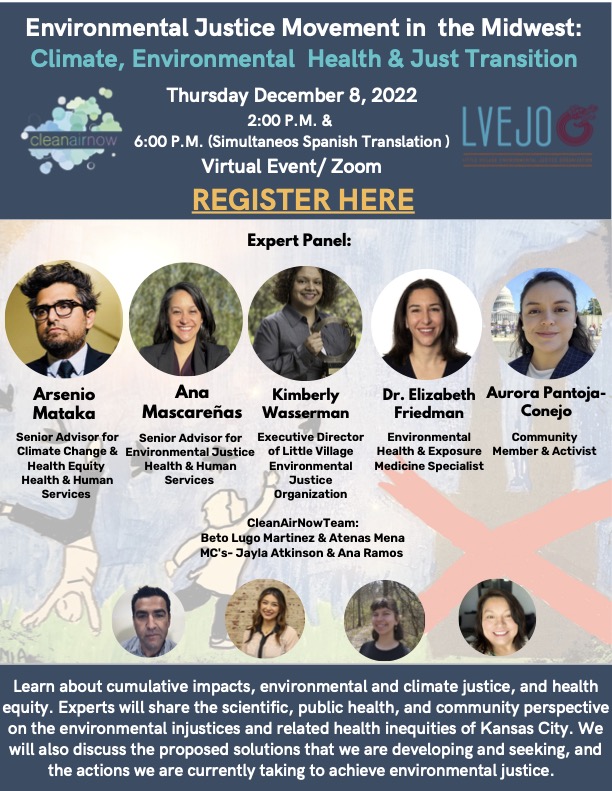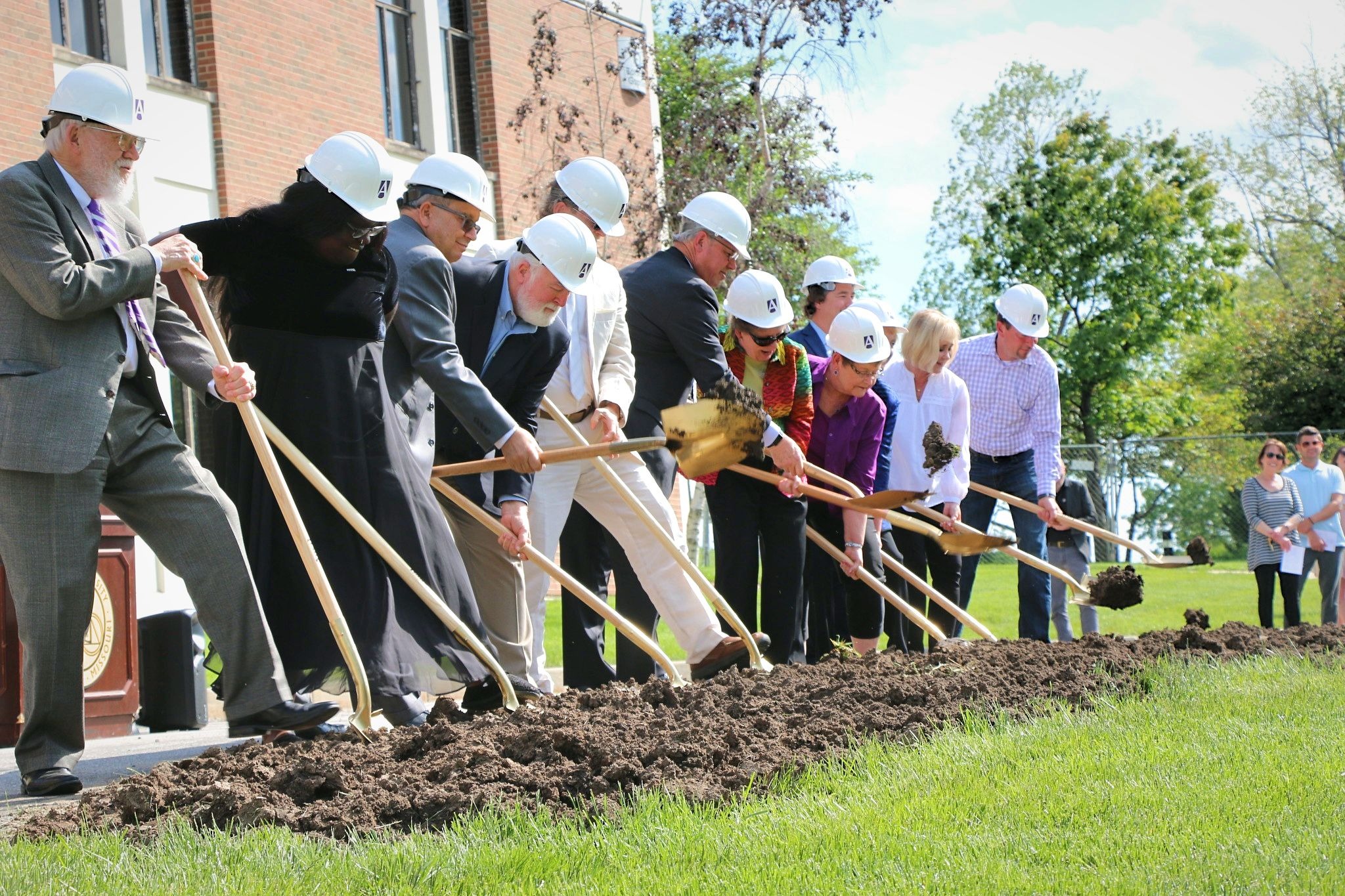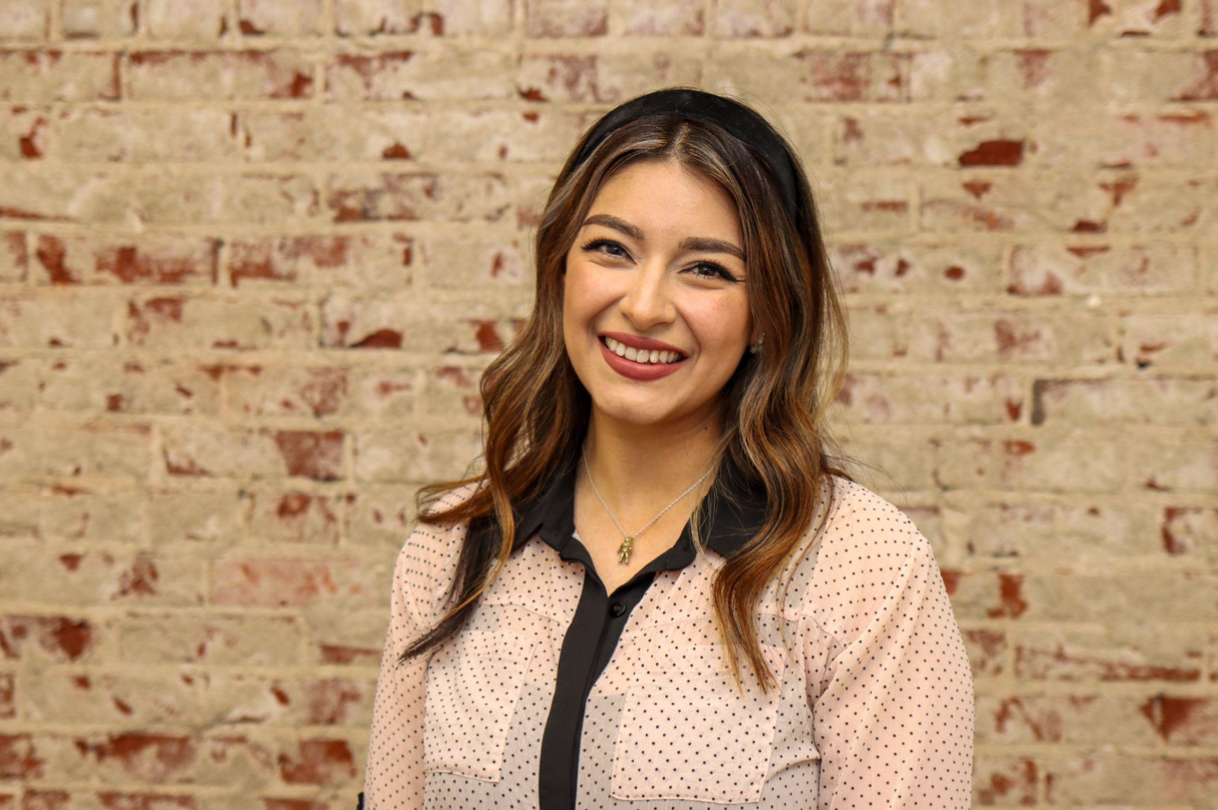Avila Alumna, Atenas Mena is the Co-Executive Director/Environmental Health Director of CleanAirNow (CAN). She is a proud first-generation college student, Mexican American, the daughter of immigrants, and grew up in Kansas City, Kansas. Mena graduated from Avila University with a Bachelor’s in Nursing in 2014 and a Master’s in Nursing Leadership from Missouri Western State University in 2019.
“The School of Nursing (SON) is very proud to have Atenas as a graduate of our program. Atenas has returned to the SON to talk with our seniors in their Population Health Course. She talked about the role of nursing in environmental health and about the extent that air quality impacts health. She also talked with them about health disparities and how they relate to environmental health hazards. Atenas is an outstanding nurse and human being. She is very dedicated to our community and passionate about quality healthcare for all,” said Assistant Professor Lonna Boen.
What’s your story?
I’m a first-generation Mexican American college graduate, the daughter of immigrants, and I grew up in Kansas City, Kansas. My first language was Spanish, and I learned English by watching TV. While navigating the education system, I was fortunate to come across caring and supportive teachers, counselors, and mentors. I looked up to them, along with my hard-working parents. I wanted to do for others what they did for me – provide hope, love, and care. That meant a career path in the line of service.
College was not something affordable or easily accessible. So I worked hard, strived for A’s, and tried to work in the summers to save up my money. Then, in the early years of high school, I received the greatest gift anyone could give me, a chance to get an education at a University with all expenses covered. The Ewing Marion Kauffman Foundation awarded low-income students of color from Wyandotte County this great opportunity. They invested in us economically and instilled a mentorship and academic component to guide us through an unknown path. Many of us were going to be the first generation going to college in our families, and there was a lot we were unfamiliar with, from ACT, FAFSA, room and board, college options, career options, and even sororities. That was my chance to follow my dreams and become a nurse.
What brought you to Avila?
Avila had a well-known nursing program near other hospitals and healthcare systems where I considered working. My second reason was that I wanted to be in a small classroom where I could easily see the teacher, get to know them, and feel comfortable asking questions. I need to understand the science and practice of nursing, and the best way I learn is in a smaller, more personal, and comfortable setting.
What was your experience as an Avila student?
It was better than I expected. I stayed in a dorm, which made it easy to get to class since the campus was so walkable and everything was nearby. I was able to connect with other struggling nursing students, and we took care of each other. We helped each other stay on top of homework, studied together, celebrated achievements, and cried after disappointments. Nursing school was tough. There is much to learn, memorize, understand, and strategically process. If it weren’t for the great teachers and my crew, I wouldn’t be where I am today. Another struggle that was hard for me to process or put into words at the time was that I was one of a handful of people of color in nursing school and the whole campus. That is true in many colleges and even in the nursing profession. When equity, diversity, and inclusion are not a priority in the fabric of nursing or even education, we miss the opportunity to grow collectively, to have diverse and complex thinking, and to create upstream solutions.
How did your degree and experience from Avila help prepare you for your career?
Nursing logic is in everything I do. Nursing skills require strategy, so we can see what is to come and have a plan in place. We see the connections between risks and vulnerabilities to health deterioration.
What would you say to others who are considering Avila?
I had a great time there and formed lasting friendships with my peers. I found support from some caring professors and comfort in being in smaller groups and classes so I could have more 1-on-1 support whenever I needed it.
How did your nursing experience prepare you for your role with Clean Air Now?
I got lucky when I found a job posting at Children’s Mercy (Healthsystem), searching for an environmental health coordinator. I have worked at Children’s Mercy since 2013 and was about to start my path to the Masters in Nursing Leadership program at Missouri Western State University. I did not need more change or stress, but the work caught my eye. After some research, environmental health hooked me. I felt like a light bulb turned on in my head, and this was something I’d always wanted to do but never knew. I performed nursing assessments and home assessments for families with children diagnosed with asthma, lead exposure, or immunocompromised. I provided education about how the environment can improve or worsen our health and developed action plans with parents to manage their child’s diagnosis and promote a healthier environment.
I realized I loved bringing healthcare to the community, building trust with families, creating connections and partnerships with other community organizations, and working with parents to take control of a diagnosis and give them power and hope.
What work is CleanAirNow doing within the community?
We have instituted an environmental health program and curriculum to support the justice projects, known as community workshops, provided in Spanish and English for community members. The workshops educate community members on climate change, air pollution, and the negative health impacts and risks from exposure to pollutants and contaminants. Additionally, community members learn about air monitoring, community action, and policy change. We engage and build power by providing interactive sessions in a safe space. Health equity is key to achieving our mission and a driver for community action and representation. Our air pollution data gathering and community lived experience is invaluable. The data we gathered allowed for greater civic participation in decision-making processes and policy. Through environmental health projects and a collaborative community-engaged process, CleanAirNow has since organized the deployment of a low-cost air monitoring network that can attain scientific rigor while achieving community priorities.
What are the goals/initiatives of CleanAirNow?
CleanAirNow is a climate and environmental justice organization working to create systemic change in industry and government policies and practices to protect health and dismantle environmental racism that perpetuates the unequal distribution of environmental hazards in fenceline communities (communities of color living near an industrial toxic pollution source that contaminates the air, water, and soil).
Kansas City’s fenceline communities of color are disproportionately exposed to toxins and contaminants. CleanAirNow stemmed from community concerns around industrial air pollution, fossil fuel emissions from the heavy-duty freight sector, trucks and rail, and environmental health inequities. These inequities continue to widen and expose vulnerabilities with historical links to racial inequality and unequal distribution of health resources. We envision a zero-emissions future where all people thrive in a healthy environment and are actively involved in decision-making processes, creating community-led solutions to inform policies that directly benefit their health and community.
“The CleanAirNow Coalition is dedicated to improving air quality in Kansas City and the surrounding region, particularly in communities suffering the greatest health burden, and to preventing and mitigating disease caused by air pollution.”
Government must implement strong enforcement regulations on air pollution and industrial polluters. To help achieve this, CAN advocates for zero-emissions policies in the transportation sector while identifying other policies and objectives complementary to zero-emission legislation and prioritizing environmental justice communities. We integrate community-led policy research at local, state, and federal levels to improve Air Quality Standards and work to advance community-led policies to improve health outcomes.
We create a cohesive movement in local neighborhoods through grassroots organizing and intergenerational leadership development. We build trust with one community member at a time with an intentional investment in neighborhood leadership utilizing data to support community members’ lived experiences. We provide space for those systematically excluded from the decision-making process by civic and community-led engaged projects, education, and advocacy.
Do your roles overlap?
Yes, definitely! Nursing started in the community. Before hospitals were a thing, nurses and doctors went out to patients’ homes. They were part of the neighborhood, part of the community. Healthcare went to the community, not the other way around. What I am doing is called community-based nursing service – public health. I want to avoid children ending up in the ER from asthma attacks. My work helps address the barriers and inequities in healthcare and the structural racism that exists, further exacerbating unwanted health outcomes and contributing to shortened life spans. Climate change is the number one environmental health crisis in the world. Nurses should be part of this work, conversation, and movement. Nurses can support the work of community organizations and be advocates from within their institutions.
Anything else you’d like to share?
As an alumna and advocate, I strongly encourage Avila to adopt education around climate change, environmental justice, social determinants of health, and cumulative impacts in the nursing school curriculum. These topics transcend into all areas of nursing. I would love to see this in all nursing programs.
For some good reading, please check out the Environmental Racism report that CleanAirNow and the Union of Concerned Scientists published and our Environmental Justice Recommendations for the KCMO Climate Protection and Resiliency Plan.
Lastly, we will be hosting a virtual discussion, “Environment Justice Movement in the Midwest,” on Thursday, December 8th, at 2 pm CST and 6 pm CST (with simultaneous Spanish translation) for 1.5 hours. The discussion will focus on cumulative sources of pollution, environmental and climate justice, and our work together. The event will feature community leaders, environmental justice, and scientific experts. Please Register Here for this event.


